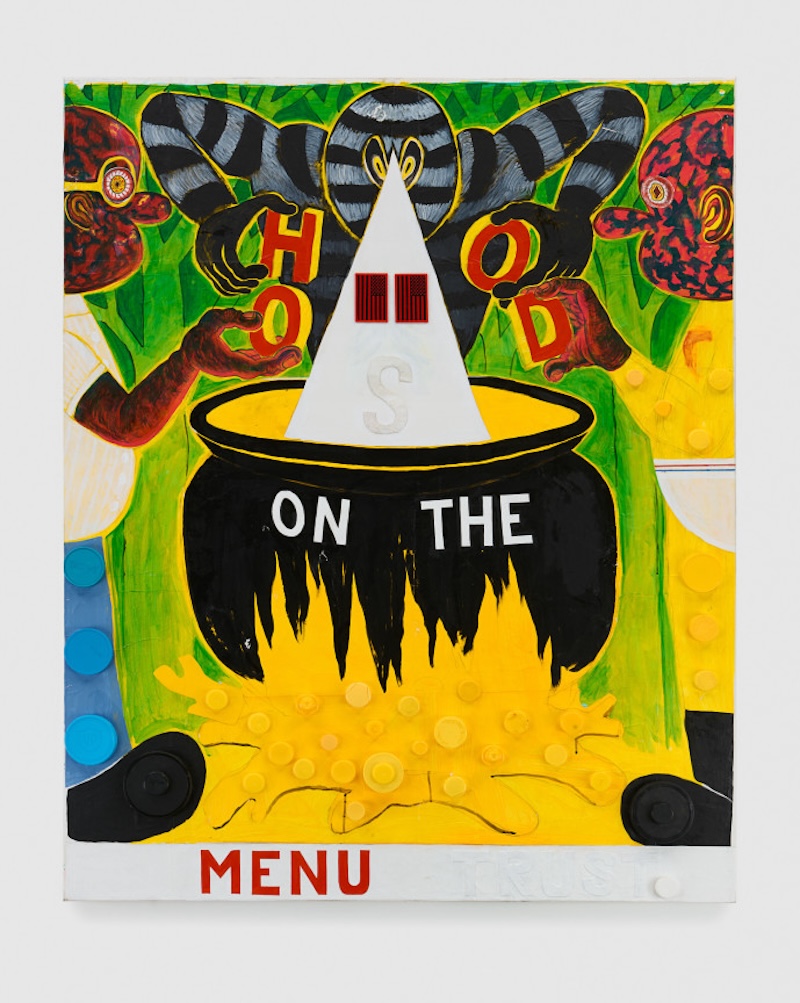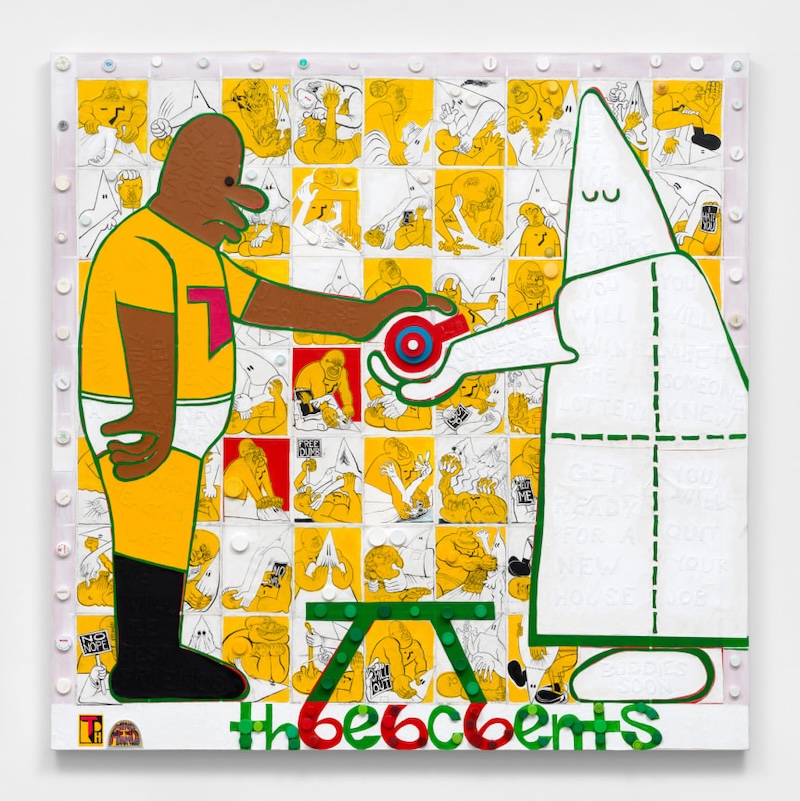James Cohan is pleased to present Torpedoboy and the Revisionist Mystery, an exhibition of new paintings by former Juxtapoz cover artist, Trenton Doyle Hancock, on view at the gallery’s 52 Walker Street location from October 25 through December 21, 2024. This is Hancock’s eighth solo exhibition with James Cohan.
This exhibition is presented concurrently with the artist’s museum exhibition, Draw Them In, Paint Them Out: Trenton Doyle Hancock Confronts Philip Guston, at The Jewish Museum in New York. On view from November 8, 2024, through March 30, 2025, the exhibition brings together the work of two trailblazing artists of different generations—whose lives, both personal and creative, share unexpected and often remarkable connections.
For almost 30 years, Trenton Doyle Hancock has intertwined a materially innovative and accumulative approach to painting with unflinching self-examination, incisive cultural commentary, and worldbuilding. Drawing from omnivorous realms of influence–from the paintings of Hieronymus Bosch and Stanley Whitney to Lee Bontecou and the RAW comic anthologies of the 1980–Hancock creates a syncretic and ever-evolving epic narrative. Within this fantastical universe, he contends with American identity, artistic legacy, and autobiography, shot through with pathos and humor.
Torpedoboy and the Revisionist Mystery features new collaged paintings that expand upon Hancock’s acclaimed Step and Screw series. These works portray the artist’s superhero alter ego Torpedoboy in a series of ambiguously-charged moments of exchange with one of the buffoonish Klansman who populate Philip Guston’s paintings. Hancock’s latest chapter of this unfolding saga represents a dramatic evolution of the action at hand. Torpedoboy and the Klansmen engage in a physical struggle, with the tides of victory shifting from frame to frame. At times, the erstwhile hero even turns–violently–on his own creator. In other works, he incrementally morphs into a hooded Klansman himself.
Richly metaphysical in nature, these paintings reflect Hancock’s desire to complete the unfinished narrative begun in Guston’s Klan paintings. He remarks: “While examining the late Klan paintings, I made a realization. Ultimately, the Klansmen drove their jalopy into the sunset, never facing charges or indictments. Therefore, I summoned Torpedoboy with his particular brand of vigilante justice.” The escalating confrontations that unfold across these paintings both enact this justice and serve as an expression of the artist’s own struggles with his ambivalence about participating in systems rooted in structures of white supremacy. Hancock brings the personal into conversation with contemporary political criticism, physically dragging Guston’s Klansman into the present.









